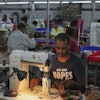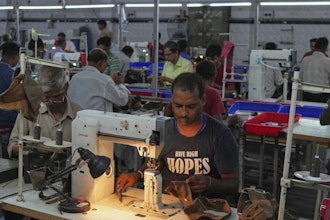In the drive to keep competitive in today's manufacturing market, U.S. manufacturers are facing many challenges - taxes, energy costs, healthcare and regulatory costs, and workforce development. But possibly the biggest challenge is foreign trade and specifically, trade with China.
In his keynote address to manufacturers at National Manufacturing Week, Jim Owens, Chairman and Chief Executive Officer of Caterpillar, Inc., called on U.S. legislators to reduce anti-trade rhetoric and focus on keeping U.S.-China relations positive and constructive.
"Personally, I can think of no faster path to a worldwide recession than for the twin engines of the global economy -- the United States and China -- to turn against one another," said Owens. "Both countries need to make an extra effort to ensure that we treat each other with mutual respect. Rather than threatening protectionism, leaders must redirect their energies toward improving competitiveness and opening markets," he said.
Owens specifically called on U.S. lawmakers to reject legislative proposals to impose tariffs on Chinese imports. He suggested that China would be more responsive to the trade concerns of the U.S. if China had a greater role in multilateral organizations such as the G-8, The International Energy Agency, The International Monetary Fund and The World Trade Organization.
He also suggested that the U.S. should consider granting China market economy status prior to the current 2016 timeframe. But Owens said that such a move should be contingent on China making major changes to how it regulates the economy, including better enforcement of intellectual property protections, a continued commitment to fair currency valuation with a meaningful revaluation, and greater reliance on market-based principles.
To compete with the world's best manufacturers, Owens believes there are four areas were U.S. manufacturers must improve. First, American manufacturers must focus on designing new, top-quality products that are desired in the world market.
Second, manufacturers must continue to embrace lean manufacturing principles and just-in-time delivery. This will help keep costs low and productivity high.
Third, manufacturers must invest in their workforce through education and training development programs. Our proximity to market is an advantage that the U.S. has and this cannot be replicated by foreign competitors, even though they will try to produce better products and adopt world-class processes.
Fourth, American manufacturers must believe that they can compete in world markets. "We must look at globalization and international competition as an opportunity to make U.S. manufacturing stronger and more efficient," said Owens, "and not, as some are proposing, as a reason to turn inward and put up barriers to trade and investment."
Owens described how in his own company, Caterpillar used global expansion as a tool to become a better company both in the U.S. and overseas. They have gained a global presence in 40 countries by refusing to concede markets to competitors.
As an example, Owens cited Caterpillar's investment in China. "Over the last few years, we've more than doubled our Chinese workforce and significantly expanded our sales in China," said Owens. "At the same time, we've increased our U.S. exports to China by 40%. This helped to create almost 5,000 new jobs in the U.S."
Owens believes that the U.S. must take a leadership role in championing openness and liberalization in trade with foreign countries. And not just with China -- but with the new economies of India, Russia, and countries in Southeast Asia and Eastern Europe. Turning inward, rather than moving toward trade liberalization, could have negative implications on U.S. manufacturing -- both for the large and small manufacturer.
"The U.S. has only 5% of the world's population; 95% of the potential customers are located outside the U.S.," said Owens. "Trade liberalization will bring more of these people into the global economy. As the quality of life improves for these populations, they will become consumers of our products."
Owens remains optimistic about the future of U.S. manufacturing. Although there are challenges, he believes the current challenges are no more formidable than those that have been overcome in the past.
"The recipe that has made Caterpillar a successful manufacturer in the global marketplace can be used by others," concluded Owens. "It is made up of three key ingredients: designing and producing innovative, high-quality products; embracing lean manufacturing processes to drive efficiency; and investing in educational and workforce development for the people who make up our companies."



















